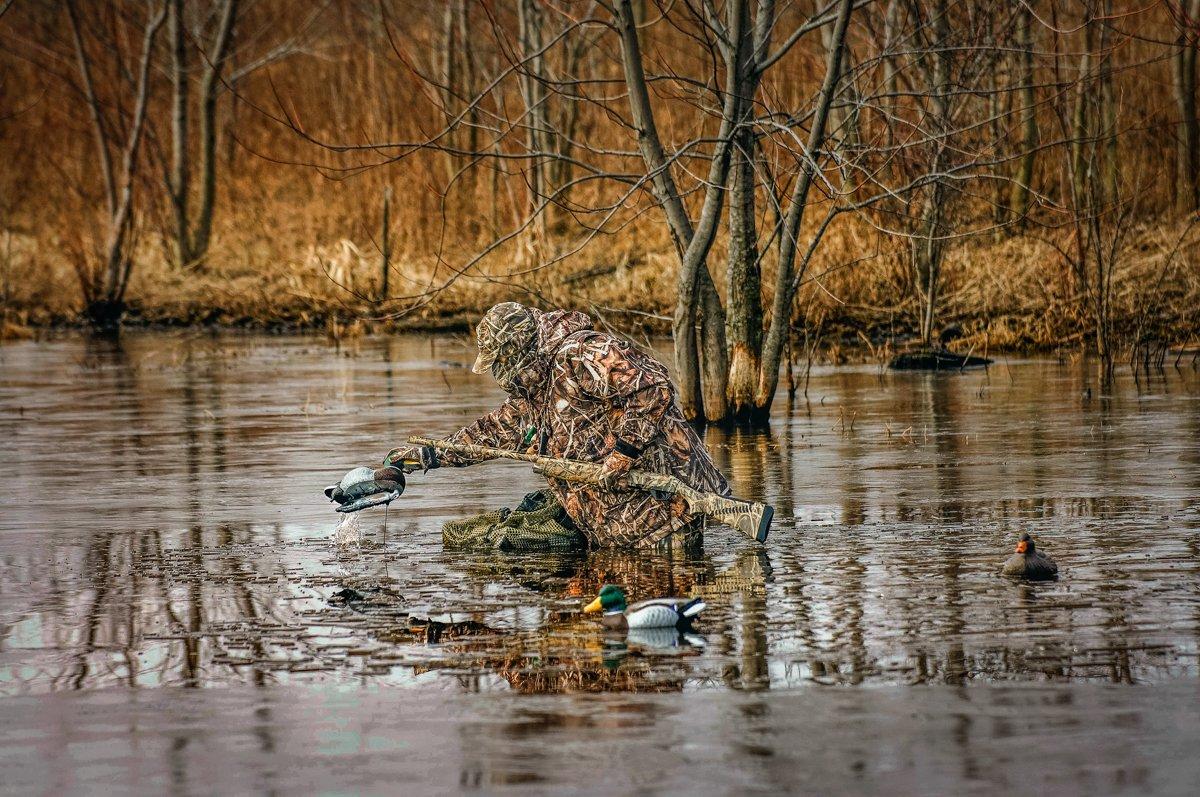Changing Locations and Rearranging Decoys Might Be a Pain, But it Pays Dividends
You look forward to that peaceful moment. The decoys are set, and the boat is anchored, or the field blinds brushed in beautifully. All you have to do is relax and let the hunt play out.
But sometimes, ducks and geese have other ideas.
Many days, perfect hides or ideal spreads don't impress waterfowl, and birds flare, don't finish, or overshoot or land short of the decoys. Something's obviously wrong, which leaves you with a dilemma: Do you resolve to stay put and hope the problem solves itself, or do you sacrifice time and effort — even with birds in the air — to move or change your setup?
The answer is fairly obvious. Setup problems rarely disappear, and many days, you need to tweak your approach if you want to kill birds. Some hunters procrastinate or avoid doing so, however, because changing setups requires lots of work and the admission that your best first effort failed.
Get over it, and get moving. First, identify the problem. If ducks and geese are seeing your boat or blinds, you need to conceal yourself better or even move your hide. Get the sun at your back, if possible, and consider setting up perpendicular to the wind, so approaching birds aren't looking directly at you. For field hunting, consider moving your layout blinds close together to form one blob instead of several smaller ones. Then, redouble your concealment efforts by brushing in every exposed piece of blind or hunter.
When waterfowl won't finish, switch your decoys. Often, you'll identify the problem after the first flock or two. Don't wait for flock No. 3 to confirm your fears. Sometimes, simply rearranging your spread helps. Make your open kill hole larger. If the wind is light, spread your blocks out more. When hunting diving ducks, define their flight path better by extending a runway-like tail downwind. If geese overshoot your field spread, note where they prefer to land, and move the setup there. When mallards or other puddlers work to the sides of your spread, plop decoys in ancillary open areas to entice birds to center over your main landing zone.
Often, your best Plan B will come up a bit short, so be prepared to adjust again. Be observant, and keep an open mind. Success often hinges on your ability to analyze waterfowl behavior during a hunt and then adjust and adapt to what birds seemingly want.
A recent goose hunt provides the perfect example. Three buddies and I set out a dandy spread of full-bodies on a hot hay field, and then brushed in our blinds until they disappeared. However, two of the first three flocks sailed over our heads and landed 100 yards upwind. We quickly dragged our blinds to the spot and hastily assembled a new spread, even as dozens of confused honkers flapped overhead. The next flock decoyed a bit better, but something was still off. Someone suggested placing four or five decoys in the kill hole to make it look as though a family group had just landed there. It worked. For the next two hours, singles, doubles and flocks finished perfectly, and we filled up by 10:30 a.m., despite spooking dozens of geese hours before.
Yeah, that required lots of work, and we were tired. And we knew beforehand that our switch-up might not make a difference. But during that hunt — and in most situations — extra effort and smart adjustments paid huge dividends.
Look at it this way: Would you rather sit in comfort for two hours, endure a poor hunt and then regret your inaction? Or would you prefer to engage your brain and body, exhaust all possibilities and maybe enjoy a banner day?
You know the answer. No one daydreams during winter about the day they relaxed and watched a potentially great hunt slip away.
Click here for more Realtree waterfowl hunting content. And check us out on Facebook.







